International Journal of Aquaculture and Fishery Sciences
Effects of water depth on growth performance of Indian major carps at a poly culture system in Bangladesh
Md Hafiz All Hosen1, Koushik Sarker1, Mousumi Sarker Chhanda2* and Nipa Gupta2
2Departmen of Aquaculture, Faculty of Fisheries, Hajee Mohammad Danesh Science and Technology University, Bangladesh
Cite this as
Md Hosen HA, Sarker K, Chhanda MS, Gupta N (2019) Effects of water depth on growth performance of Indian major carps at a poly culture system in Bangladesh. Int J Aquac Fish Sci 5(3): 014-021. DOI: 10.17352/2455-8400.000046The main aim of this study was to assess the effect of water depth on the growth performance (length and weight) of table size Indian major carp (Gibelion catla, Labeo rohita, and Cirrhinus mrigala) fishes. Fishes were recorded under different depth (1.20 m, 1.80 m and 2.80 m) for about eight months from February 2016 to September 2016. Water depth was considered as treatment 1 (T1) for 1.20 m, treatment 2 (T2) for 1.80 m and treatment 3 (T3) for 2.80 m, respectively. Randomized Complete Block Design (RCBD) with two replications of each treatment was differentiated at significant level 0.05. Various water quality parameters such as water temperature, dissolve oxygen, transparency, and pH were also recorded. The survival rate was found maximum (99.23±0.4%) for Labeo rohita fish at 2.80 m water depth and lowest (95±2.1%) survival rate was observed for Gibelion catla fish at 1.20 m water depth. Results of this study showed that Gibelion catla, Labeo rohita and Cirrhinus mrigala fish cultivated at four feet depth of water produces lowest average weight of 1398 g, 1048 g and 1050 g, respectively with an average length of 47 cm, 49.2 cm and 46.4 cm, respectively. The maximum average weight of fish 3667 g, 2700 g and 2800 g were obtained at 2.80 m depth of water with the maximum average length of 63.2 cm, 60.0 cm and 58.6 cm for Gibelion catla, Labeo rohita and Cirrhinus mrigala fish, respectively. From this study, it can be observed that the fishes cultivated at low depth of water yielded lowest, and shorter in length in contrast to the carps cultivated at higher depth of pond water. However, growth of Gibelion catla was notably high among other carps.
Introduction
Bangladesh is one of the resourceful countries in the South-East Asia where different types of fish species are cultivated for fulfilling high quality protein requirement. Carp fish is one of the most significant fish species for aquaculture all over the world and represent the species of choice due to its high growth rate, ease in reproduction, tolerance to environmental stress and its market demand. Though there are at least 265 freshwater fish species in the country [1]. But only 4 native and 12 exotic carp species are cultured in Bangladesh [2]. Usually, large carp including Rui (Labeo rohita), Mrigel (Cirrhinus mrigala), Catla (Gibelion catla), grass carp and silver carp are common aquaculture species in Bangladesh [3,4].
Fish naturally tend to select the habitat that is most suitable for their physiological requirements. This behavior is known as ‘habitat selection’ or ‘enviro regulation’ [5]. The optimum fish production is totally dependent on the physical, chemical and biological qualities of water to most of the extent. Hence, successful pond management requires an understanding of water quality. Water quality is determined by variables like temperature, transparency, turbidity, water color, carbon dioxide, pH, alkalinity, hardness, unionised ammonia, nitrite, nitrate, primary productivity, BOD and plankton population [6]. In addition to water quality ponds depth also significantly affect the growth rate and survival on fish cultivation [5].
Several researches have already carried out some researches regarding effect of water quality and depth of ponds on fish growth rate. The optimum pH range differs among species; however, the pH 6.5-9.0 range is generally accepted for fish culture [7]. The temperature at which the best growths of most carp for the tropical is 28-32°C [8]. According to Banerjea (1967) dissolve oxygen (DO) for the good production of fish should be above 5ppm [9]. Clerk (1986) reported that BOD range of 2 to 4 mg L-1 does not show pollution while levels beyond 5 mg L-1 are indicative of serious pollution [10]. According to Boyd and Lichtkoppler (1979), fishes are avoided free CO2 levels as low as 5 mg L-1 , but most species can survive in waters containing up to 60 mgL-1 carbon dioxide, provided DO concentrations are high [11]. Ali et al., (2013) pointed that the effect of water depth on Nile tilapia fingerlings and adults significantly affect the growth performance and survival rate [5].
However, the effect of pond depth on the growth of this three valuable carp fish has not yet been done so far. Therefore, this study was conducted to evaluate the effect of pond depth on the growth performance of Indian major carp’s fishes (Gibelion catla, Labeo rohita and Cirrhinus mrigala).
Materials and Methods
Experimental site, experimental design and pond facilities
The experiment was carried out for a period of eight months during 1st February to 30thSeptember, 2016 in six different ponds located at Niamatpur, Thakurgaon (Figure 1). The experiment had 3 treatments with 2 replications for each. Water depth was considering as treatment (T1) for 1.20 m, treatment (T2) for 1.80 m, treatment (T3) for 2.8 m following randomized complete block design (RCBD). The ponds were rectangular in shape and the total surface area of these ponds was 650 decimals. Each pond had an inlet for watering but no outlet, free from aquatic vegetation, well-exposed to sunlight and sandy loam bottom. The stocked fish fed at morning and afternoon daily at the rate of 5% body weight with commercial pellet feed (30% crude protein) of name Nourish Poultry and Hatchery Ltd.
Pond preparation
Before starting the experiment, the ponds were dried and made free from aquatic vegetation. After drying, liming (CaO) was done in all the ponds at the rate of 250 kg/hectare. Ponds were then filled with ground water at required depth. Seven days after liming, Urea and triple super phosphate (TSP) were applied each at the rate of 39.0 and 37.0 kg/hectare, respectively. Seven days after fertilization, sumithion was applied in all the ponds at the rate 25 Liter/hectare.
Stocking
Experimental fishes were stocked in all ponds in the morning on 2nd February following the experimental design. Containers were kept floating in water about 30 min in the experimental ponds for acclimatization of temperature before releasing the carp fishes. The weight of approximately 10% of each species for each pond was measured and recorded for estimating initial stocking biomass as well as adjust feeding rate of fishes. Table 1 shows the stocking density in different ponds.
Post stocking management
Fertilization: Fertilization was done with Urea (50 kg/hectare) and TSP (25 kg/hectare) at fortnightly basis during the study period. TSP was dissolved in water for 24 hours before and Urea was dissolved in a bucket in the morning and then applied by spreading with a mug on the pond surface. Fertilization was done fortnightly.
Study of physicochemical parameters of water: The physico-chemical parameters of pond water were recorded fortnightly throughout the experimental period between 10 A.M. and 12 A.M. Physical parameters such as; water temperature (°C), transparency (cm), and water depth (m), dissolved oxygen (mg/L) and pH were measured at the pond site on each sampling day. Depth of water of the experimental ponds was estimated with the help of a graduated wooden scale.
Growth parameters:
Weight gain (g)
The weight gain was calculated through the following equation:
Weight gain (g) = Mean final weight (g) - Mean initial weight (g) (1)
Specific growth rate
Specific growth rate of fish under different treatments was calculated using the formula:
where, InW2 – InW1 is the difference of logarithm of initial and final weight and Tis the duration of the experiment (days).
Survival rate
The survival rate (SR) of fish was calculated as follow
Statistical analysis
The data were analyzed by Statistical Analysis System (SPSS Windows version 22). Treatment means were compared at p<0.05 according to the Duncan’s New Multiple Range Test (DNMRT) and Least Significant Difference (LSD).
Approval
This experiment was performed under the Department of Fisheries Management in accordance with university rules and regulations. Approved and revised by the post graduate defence committee of Hajee Mohammad Danesh Science & Technology University, Dinajpur-5200, Bangladesh (approval and certified no. 914).
Results and Discussion
1. Analysis of physicochemical Parameters
Temperature
The monthly values of water temperature throughout the experimental period are shown in table 2. It was found that, between the temperature range of 18-30oC, the growth of the fishes was high. This finding was concurred with Nazish and Mateen (2010) as they reported that the freshwater fish have an optimum growing temperature in the range of 25-30°C at which they grow quickly [12]. However, there was no significant difference in temperature of water in the month of April and May. In July lowest temperature was recorded at 18oC while the highest temperature (30oC) was noted in May. Similar findings in temperature of pond water were reported by Nwipieet al. (2015), Kohinoor et al. (2012) [13, 14].
Dissolved oxygen (DO)
The change of dissolved oxygen in pond at different depth of water is shown in table 3. Low dissolve oxygen (5.4 ppm) was found in the month of February at T1 treatment while maximum dissolve Oxygen (9.07 ppm) was found in the month of July at T3 treatment. Similar findings were also reported by Bhatnagar and Singh (2010) that DO level greater than 5 ppm is essential to support good fish production [8].
Transparency
The transparency values throughout the experiment were shown in table 4. Low transparency (28.12 cm) was recorded at T3 treatment in February while high transparency (34.3 cm) was at T2 treatment in July. This result was in good agreement with Boyd (1982) that the transparency between 25 to 40 cm as appropriate for fish culture [15]. However, Azim and Wahab (2003) reported the transparency value as 36.2 cm in weed based carp polyculture pond [16].
pH
The water pH was measured during the whole experiment was shown in table 5. Analysis of the data revealed that within the same treatment the change of pH was not significant from February to May for all the treatment. The highest pH value (8.6) was recorded at T3 treatment in the month of February while the lowest pH value (6.7) was recorded at same treatment in the month of July. From the experiment, it was observed that the maximum growth of fish occurred at a pH range of 6.7 to 8.6. The similar observations have been made by Singh [17].
Growth parameters
Survival rate (SR) of carp fishes: The survival rate of Gibelion catla, Labeo rohita and Cirrhinus mrigala fishes are presented in figures 2-4, respectively. It was found that the effect of water depth on survival rate was remained significant (p<0.05). At the end of experiment, the highest survival rate (99.23%) was observed in T3 followed by T2 (99.0%) and the lowest survival rate (95.0%) was recorded in T1 for Gibelion catla fishes in figure 2. It was also observed that the survival rate was maximum at T3 and lowest at T1 as depicted in figure 2. However, maximum survival (99.23%) rate was found for Labeo rohita fishes at T3 as shown in figure 3. The survival rate of this present study was corresponding to Miah et al., [18] and found the survival rate from 89.23-99.23% and similar findings were also reported by Mamun and Mahmud [19].
Specific growth rate (SGR) of carp fishes: Specific growth rate of Gibelion catla, Labeo rohita and Cirrhinus mrigala fishes are presented in figures 5-7 respectively. It was found that the effect of water depth on specific growth rate was remained significant (p<0.05). The specific growth rate of Gibelion catla, Labeo rohita and Cirrhinus mrigala fishes in this experiment reveals that at the early stage of rearing the growth of fishes were high. The specific growth rate decreases at the end of the experiment for all the treatment (T1, T2 and T3). However, specific growth rate at T3 was higher while compare to the T1 and T2 for all carp fishes. Similar findings were also reported by Mamun and Mahmud [19].
Average weight and length gain of carp fishes: Average weight and length gain of Gibelion catla, Labeo rohita and Cirrhinus mrigala fishes are presented in table 6. The individual average weight (2511±95.4 gm) gain was maximum for Gibelion catla fishes at T3 and minimum individual average weight (769±43 gm) gain was found for Cirrhinus mrigala fishes at T1 treatment. Analysis of the data also reveals that the individual average length gain was maximum (53.9±9.3 cm) for Gibelion catla fishes at T3 treatment and minimum (39±6.2 cm) individual average length gain was found for Labeo rohita fish at T1tratment (Table 5). The average specific growth was found maximum (1.12±0.1%) for Labeo rohita fishes at T3 treatment while lowest (0.62±0.02%) specific growth rate was found for Cirrhinus mrigala fish at T1 treatment. Analyzing of the data also reveals that survival rate of all table sizes carp fishes was found greater than 95%. However, the survival rate was found maximum (99.23±0.4%) for Labeo rohita fish at T3 treatment and lowest (95±2.1%) survival rate was found for Gibelion catla fishes at T1 treatment.
Effects of Water Depth on the Weight and Length of Carp Fish
Effect of water depth on the weight of Gibelion catla fish: Analysis of the data showed that the weight of Gibelion catla fish were significantly (p<0.05) affected by the single effect of water depth. It was observed that Gibelion catla fish cultivated on 2.80 m depth of water yielded higher fish weight while compare with the Gibelion catla fish cultivated at the lower water depth. Figure 8 showed that the mean weight of Gibelion catla fish increased linearly from 1.20 m to 1.80 m depth of water and from 1.80 m to 2.80 m depth of water mean weight of Gibelion catla fish decreased slightly as compared to 1.20 m to 1.8 m depth of water. Therefore, it was concluded that carp fish cultivated at higher water depth returned higher amount of fish weight in contrast to the fish cultivated at lower water depth. This result was in great concord with Ali et al. who reported that the weight of Nile Tilapia is increased with the increase of water depth [5]. Similar findings were also reported by Stoll et al., [20].
Effect of water depth on the length of Gibelion catla fish: The effect of water depth on the length of Gibelion catla fish found significant (p<0.05). The length of the Gibelion catla fish was found maximum when it was cultivated at 2.80 m depth of water and minimum was found while cultivation of fish was done at 1.20 m depth of water. Figure 9 exhibits that the length of Gibelion catla fish increased linearly from 1.20 m depth of water to 1.80 m depth of water but slightly decreased from 1.80 m to 2.80 m depth of water. Therefore, it was concluded that carp fish cultivated at higher depth (2.80 m) of water generates fish of larger in length while compare with carp fish cultivated at lower depth (1.20 m) of water yielded fish of smaller in length. The result was in agreement with Ali et al. (2013) who reported that the length of Nile Tilapia is increased with the increase of water depth [5]. Similar observations were also Takashi and Tadashi [21].
Effect of water depth on the weight of Labeo rohita fish: Significant effect of water depth was observed in respect of weight (g) of Labeo rohita fish yield (p<0.05). It was observed that the weight of Labeo rohita fish was gradually increased with the increase of depth of water level. The highest weight of Labeo rohita fish was recorded when fish was cultivated at 2.80 m depth of water while lowest weight of Labeo rohita fish was recorded at 1.20 m depth of water. Figure 10 showed that the mean weight of Labeo rohita fish increased linearly from 1.20 m to 2.80 m depth of water. Therefore, it was concluded that carp fish cultivated at higher water depth (2.80 m) returned higher amount of fish weight in contrast to the fish cultivated at lower water depth (1.20 m). Similar findings were also pointed by Payne, et al., [22].
Effect of water depth on the length of Labeo rohita fish: Analysis of the data revealed that the depth of water significantly (p<0.05) affected the length of Labeo rohita fish. As the cultivation of fish was done at the low water depth, the length of the Labeo rohita fish yielded minimum value. Result showed that the Labeo rohita fish cultivated at 2.80 m depth of water yielded maximum mean length over the cultivation of Labeo rohita fish at 1.20 m. Figure 11 revealed that the length of Gibelion catla fish increased linearly from 1.20 m depth of water to 1.80 m depth of water but slightly decreased from 1.80 m to 2.80 m depth of water in contrast to 1.20 m to 1.80 m depth of water. Therefore, it was concluded that carp fish cultivated at higher depth (2.80 m) of water produced fish of larger in length while compare with carp fish cultivated at lower depth (1.20 m) of water. This result was full coincided with the reported values of Stoll et al. that the depth of ponds should not be less than 100-200 cm for the maximum growth of tilapia fish [20].
Effect of water depth on the weight of Cirrhinus mrigala fish: Significant effect of water depth on the weight of Cirrhinus mrigala fish was observed (p<0.05). It was observed that the weight of Cirrhinus mrigala fish increased gradually as the depth of water increases. The highest weight (g) of Cirrhinus mrigala fish was noted when it was cultivated on pond with a constant 2.80 m depth of water and the lowest fish weight was recorded in correspond to the 1.20 m depth of water. Figure 12 showed that the mean weight of Cirrhinus mrigala fish increased linearly from 1.20 m to 2.80 m depth of water. Therefore, it was recommended that carp (Cirrhinus mrigala) fish cultivated at higher water depth (2.80 m) returned higher amount of fish weight in contrast to the carp fish cultivated at lower water depth (1.20 m). This result was in great concord with Ali et al., (2013) who reported that the weight of Nile Tilapia is increased with the increase of water depth [5]. Similar conclusion was also reported by Takashi and Tadashi and Stoll et al., [20,21].
Effect of water depth on the length of Cirrhinus mrigala fish: The effect of water depth on the length of Cirrhinus mrigala fish found significant (p<0.05). The length of the Cirrhinus mrigala fish was found maximum when it was cultivated at 2.80 m depth of water and minimum was found while cultivation of paddy was done at 1.20 m depth of water. Figure 13 showed that the mean weight of Cirrhinus mrigala fish increased linearly 1.20 m to 2.80 m depth of water. Therefore, it was concluded that carp fish cultivated at higher depth (2.80 m) of water generates fish of larger in length while compare with carp fish cultivated at lower depth (1.20 m) of water yielded fish of smaller in length. The result was in full agreement with Ali et al., (2013) who reported that the length of Nile Tilapia is increased with the increase of water depth [5]. Similar outcomes were also noted by Takashi and Tadashi and Stoll et al., [20,21].
Conclusions
Therefore, the outcome of this study suggests that the carp fish cultivated at 2.80 m depth of water will be beneficial and more economical for the farmer and more economy will be earned in compared to the 1.20 m and 2.80 m depth of water.
Author Contributions
Md. Hafiz All Hosen was the principal investigator of this experiment and was analyzed and writing the original manuscripts, Koushik Sarker conducted the experiment and analyzes the data, Mousumi Sarker Chhanda and Nipa Gupta investigated the experiment and wrote the manuscripts.
- Rahman AKA (2005) Freshwater Fishes of Bangladesh. Second edition, Zoological Society of Bangladesh, Dhaka, Bangladesh 394. Link: http://bit.ly/319jsy8
- (2012) National Fish Week 2012 Compendium. Department of Fisheries, Ministry of Fisheries and Livestock, Dhaka, Bangladesh 144.
- Hossain MY, Rahman MM, Jasmin S, Ibrahim AHM, Ahmed ZZ, et al. (2008) Comparison studies on water quality and plankton production between perennial and non-perennial ponds in Bangladesh. Journal of Fisheries and Aquatic Science 3: 176-183. Link: http://bit.ly/2YFCGtM
- Rahman MM, Verdegem MCJ, Wahab MA (2008) Effects of tilapia (Oreochromis nilotica L.) addition and artificial feeding on water quality, and fish growth & production in Labeorohita-common carp bi-culture ponds. Aquaculture Research 39: 1579-1587. Link: http://bit.ly/2Zwepro
- Ali MAM, EI-Feky AMI, Khouraiba HM, EI-Sherif MS (2013) Effect of water depth on growth performance and survival rate of mixed sex nile tilapia fingerlings and adults. The Egyptian Society of Animal Production,50: 194-199. Link: http://bit.ly/2YIdset
- Anita Bhatnagar, Pooja Devi (2013) Water quality guidelines for the management of pond fish culture. International journal of environmental sciences 3: 1981-2009. Link: http://bit.ly/2YF3Tg3
- Zweig RD, Morton JD, Stewart MM (1999) Source water quality for aquaculture: A guide for assessment The World Bank, Washington 62. Link: http://bit.ly/2Kg0RuZ
- Bhatnagar A, Singh G, (2010) Culture fisheries in village ponds: a multi-location study in Haryana, India. Agriculture and Biology Journal of North America, 1: 961-968. Link: http://bit.ly/2ZuUIQu
- Banerjea SM (1967) Water quality and soil condition of fishponds in some states of India in relation to fish production, Indian journal of fisheries. Open Journal of Applied Sciences 14: 115-144. Link: http://bit.ly/2ZuoncN
- Clerk RB (1986) Marine Pollution. Fifth Edition, Oxford, 256.
- Boyd CE, Lichtkoppler F (1979) Water Quality Management in Fish Ponds. Research and Development Series No. 22, International Centre for Aquaculture (J.C.A.A) Experimental Station Auburn University, Alabama, 45-47.
- Nazish N, Mateen A (2010) Winter Growth of Carps under Different Semi-Intensive Culture Conditions. Pakistan Veterinary Journal, 31: 134-136. Link: http://bit.ly/334FBzv
- Nwipie GN, Erondu ES, Zabbey N, (2015) Influence of Stocking Density on Growth and Survival of Post Fry of the African Mud Catfish, Clariasgariepinus. Fish Aquac J 6: 1. Link: http://bit.ly/338KAPG
- Kohinoor AHM, Khan MM, Yeasmine S, Mandol P, Islam MS (2012) Effects of stocking density on growth and production performance of indigenous stinging catfish, Heteropneustesfossilis (Bloch) Int J Agril Res Innov Tech 2: 9-14. Link: http://bit.ly/33byjKC
- Boyd CE (1982) Water quality management of pond fish culture. Elsevier Sci Pub Co Amsterdam-Oxford, New York, 318. Link: http://bit.ly/2MKqrdh
- Azim ME, Wahab MA (2003) Development of a duckweed-fed carp polyculture system in Bangladesh. Aquaculture, 18: 425-438. Link: http://bit.ly/2GLQUDd
- Singh RK (2007) Fluctuation of plankton population and some hydrological factors of the Mc Pherson Lake, Allahabad.
- Miah (1997) Effect of stocking ratios on the growth and production of fishes in mixed polyculture system. Bangladesh J Fish 20:135-138. Link: http://bit.ly/2ZpNc9E
- Mamun AA, Mahmud AS, (2014) Study on the growth performance and production of juvenile Indian major carps (GibelioncatlaGibelioncatla, Labeorohita and Cirrhinuscirrhouse) and their hybrids. Journal of Fisheries and auqatic science 9: 92-108. Link: http://bit.ly/2Yn9Yme
- Stoll S, Fischer P, Klahold P, Scheifhacken N, Hofmann H, et al. (2008) Effects ofwater depth and hydrodynamics on the growth and distribution of juvenile cyprinids in the littoral zone of a large pre-alpine lake. Journal of Fish Biology, 72: 1001-1022. Link: http://bit.ly/2KkXIIT
- Takashi K, Tadashi K (2003) Water Depth as a Factor Influencing Growth Rate and Size of the Japanese Endemic Crayfish Cambaroides japonicus (Crustacea: Decapoda). Japanese Journal of Benthology, 58: 11-15. Link: http://bit.ly/2Mxz8XY
- Payne AL, Ridgway J, Hamer JL (1988) The infiuence of salt (NaCl) concentration and temperature on the growth of Oreochromis spilurusspilurus, 0, mossambicusand red tilapia hybrids. In: The Second InternationalSymposium on Tilapia in Aquaculture (ed. by R.S.V. Pullin, T Bhukaswan, K, Tonguthai&J.L. Maclean), Department of Fisheries, Bangkok, Thailand and ICLARM, Manila, Philippines, 481-487.

Article Alerts
Subscribe to our articles alerts and stay tuned.
 This work is licensed under a Creative Commons Attribution 4.0 International License.
This work is licensed under a Creative Commons Attribution 4.0 International License.
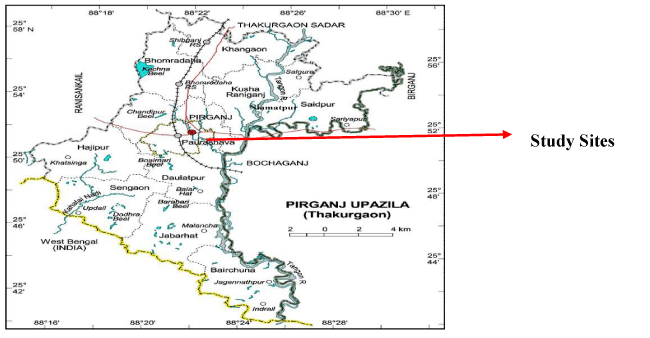
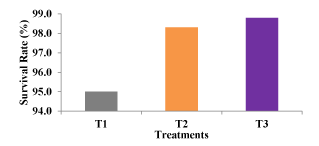
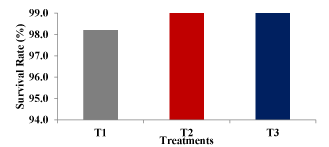
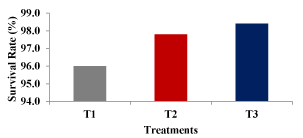
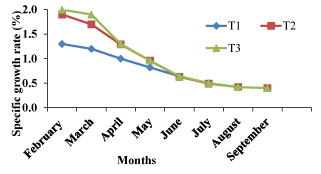
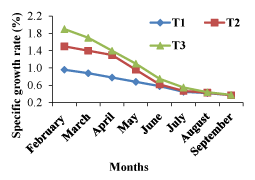
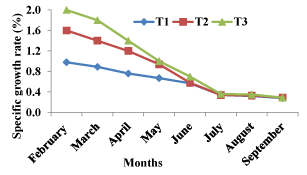

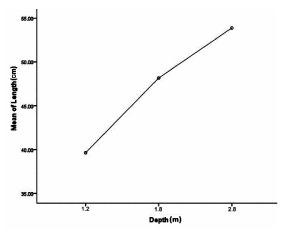
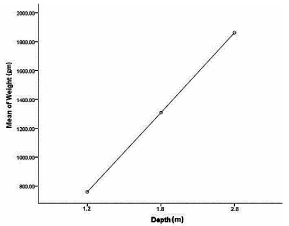
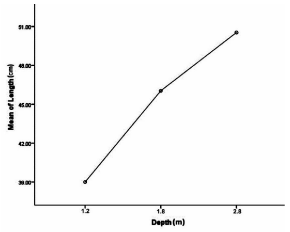
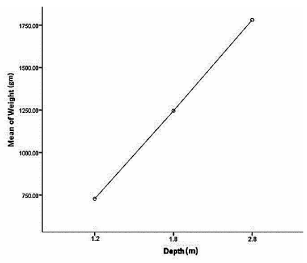

 Save to Mendeley
Save to Mendeley
